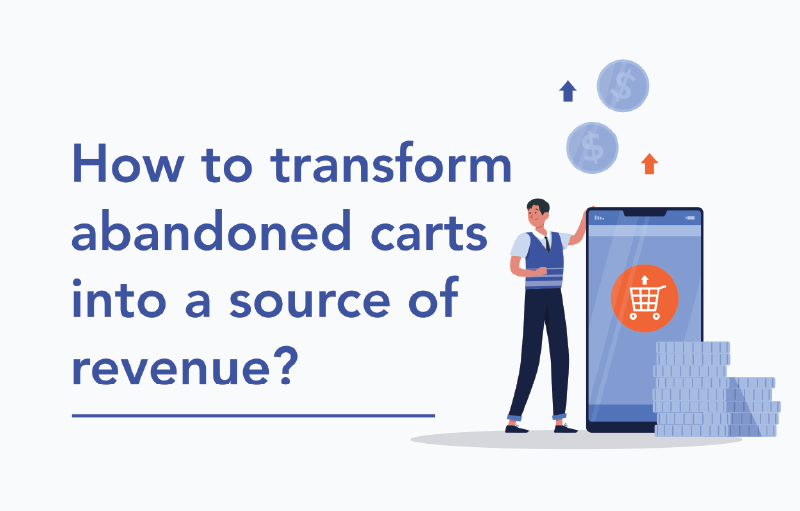Abandoned carts are a huge problem for online retailers. In fact, it is estimated that around $4 trillion worth of merchandise will be abandoned in shopping carts this year alone.
Even with those numbers we have decided to run a couple case studies and this are some of our findings:
- Over 50% of carts for returning customers were recovered without a discount which meant more ROI on each order.
- Recoveries were seen up to fifth email, especially when it mentioned the coupon only had 24 hours left.
- From 0% recovery to over 14% in 2 months meant well over $10.000 that would have otherwise been lost.
- Segmentation is key for optimization as recovery for returning customers is easier, faster and can yield more ROI.
- Dynamic Coupon and Dynamic segments tools were used to achieve this, making this campaign sustainable as it pays for itself and scalable as it still yields ROI.

Abandoned carts are the day to day bread of e-commerce, they have come into the store, even picked out an item and then puff…gone. Did they forget? Did they lose interest?
So many things can occur in the journey to conversions it is not easy to know why exactly it happens, but what we do know is that it is an industry standard with over 8 out of 10 carts being abandoned.
That metric is astounding and honestly, worrisome. This likely means:
Your acquisition efforts are not working as well as you’d like…
You are losing money…
Leaving money on the table…
Your team is a tad frustrated…
Did you know about 20% of merchants don’t even have an abandoned cart campaign?
And that over 80% of those that do, don’t optimize it or use segmentation to increase returns?
No more money left on the table, here are 3 ways to make your abandoned cart campaigns effective.
1. Journey mapping and customer triggered events
You likely use this already as in sending a recovery email only after a customer has abandoned a cart, but do you use other data to help you?
Mapping out where a customer is in your journey is essential, but let’s back up. Do you have a journey mapped?
Are you aware of which touchpoints are necessary and effective during their journey to conversion 1 and then to loyalists?
It helps to look at successful clients to understand this better and then use your abandoned cart recovery campaigns to both recover a cart, while pushing a client to those successful milestones which would be the next step.
2. Customer behavior segmentation
Segmentation is key to your marketing efforts, understanding who are you talking to and where are they in their journey is only a starting point.
Do you know what your clients are thinking, feeling, doing?
Do you know who your champions are?
This can help you come up with tactics based on client needs which can be very varied, they can include the need to know more about a product or their need can be economical, or maybe they had a bad experience before.
This is why segmenting is key, a one size fits all approach in abandoned carts will result on conversion, but segmenting can increase those conversions in over 10% as we have found in 2 case studies with actual e-commerce merchants.
10% INCREASE IN RECOVERY WITHIN THE FIRST 3 MONTHS
OVER 58% REACHED IN 10 MONTHS
3. COUPONS
This is number 3, not because it is the least important, but because this is the most common tactic used to recover abandoned carts. In fact, chances are, if you have an abandoned recovery campaign, it includes discounts or coupon codes.
This is also number 3 because it can and should be combined with both strategies above. Here are some questions you can ask yourself to do this:
Who deserves a better discount?
Who needs a larger discount?
Who does not need a discount but a product sample?
Who does not need a discount on a product they always buy, but on a new product I can cross-sell?
Let's recap some of our results, if you are interested in a case study with us download our e-book tolerant more or email sandra@unific.com
- Over 50% of carts for returning customers were recovered without a discount which meant more ROI on each order.
- Recoveries were seen up to fifth email, especially when it mentioned the coupon only had 24 hours left.
- From 0% recovery to over 14% in 2 months meant well over $10.000 that would have otherwise been lost.
- Segmentation is key for optimization as recovery for returning customers is easier, faster and can yield more ROI.
- Dynamic Coupon and Dynamic segments tools were used to achieve this, making this campaign sustainable as it pays for itself and scalable as it still yields ROI.

